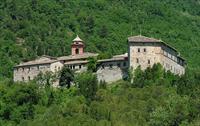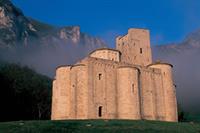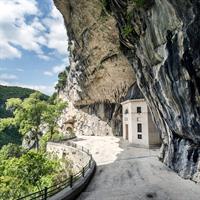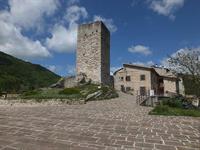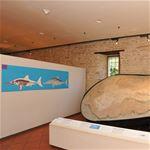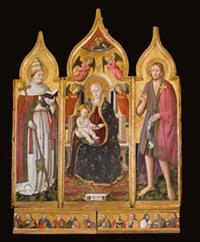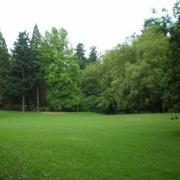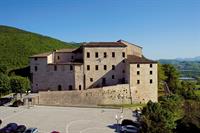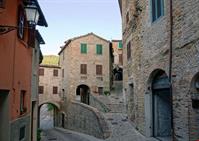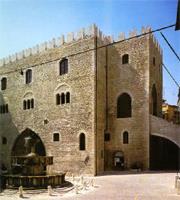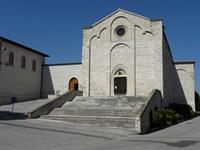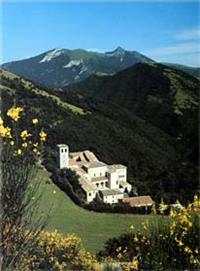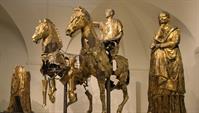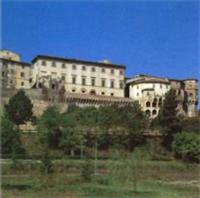MADONNA OF FRASASSI SHRINE
The
cave has always been the antechamber to a dark, secret, yet fantastical world.
It is a place of symbols, cults and legends, an archetype of the womb and the
world. From prehistory to the Christian era caves were places full of
significance linked to life, death, and various forms of spirituality. For
some, they served as places of hermitage. Notable hermits who stayed in this
area are Saint Romuald and Saint Sylvester. Of course, hermits were not only
male; indeed, monasticism appears generally to have had an older tradition
among women than men.
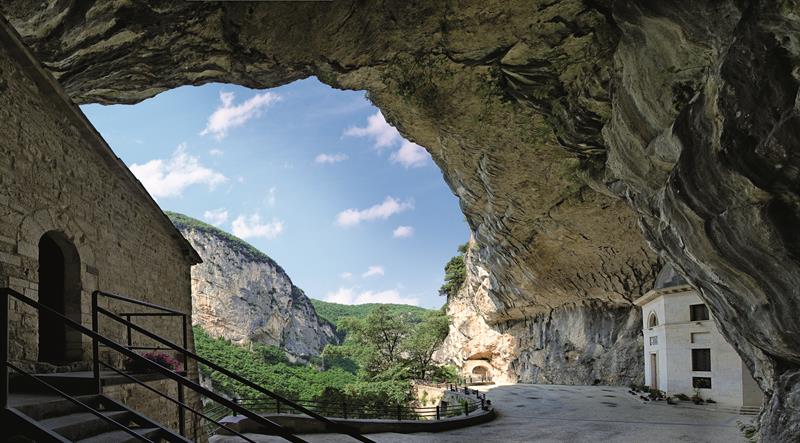
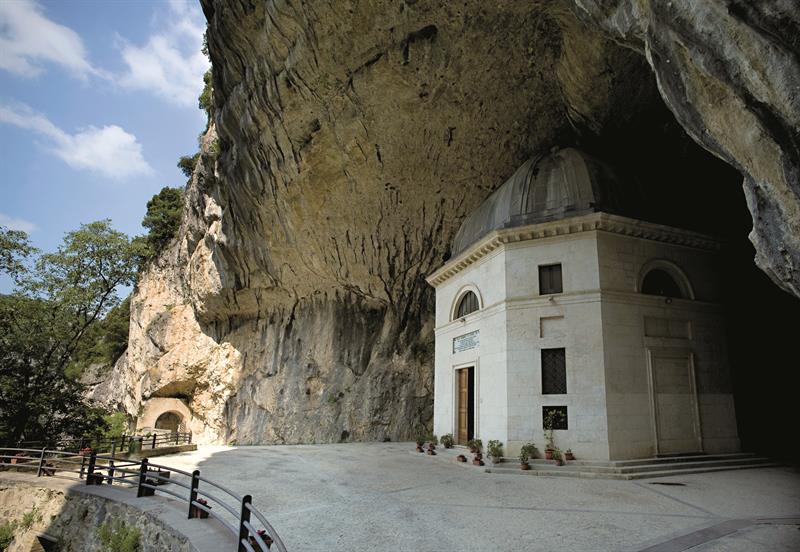
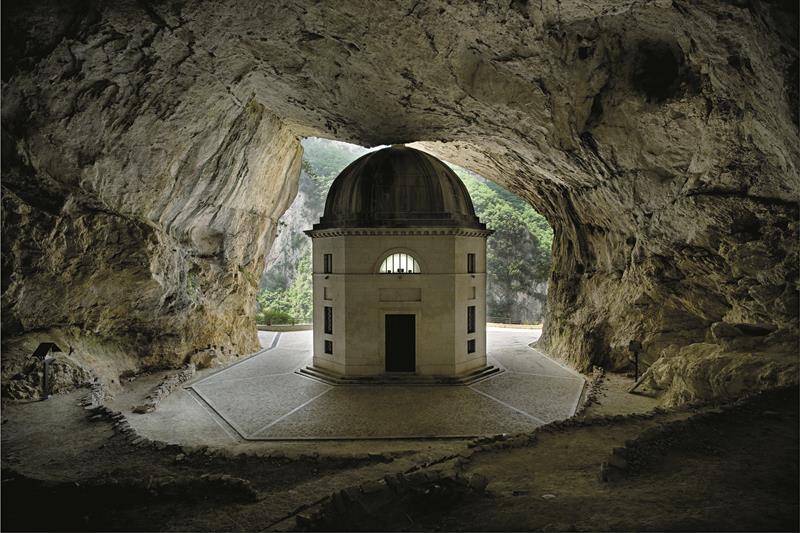
SANTA MARIA INFRA SAXA HERMITAGE
Linked
to female monasticism in the Frasassi area is the hermitage and oratory of
Santa Maria Infra Saxa, built from the Early Middle Ages. Mentioned in
documents from the year 1000, this tiny building is joined to the rocky face of
the mountain, half suspended over the cliff. It was linked to a monastic
community of women whose monastery is thought to have been on the summit. The
Benedictine nuns came to the Cave of the Blessed Virgin to pray and live a life
of asceticism. These places were likely chosen because they were isolated and
difficult to reach, making them conducive to communion with God and full of
spirituality. Thus the sacredness associated with them since prehistory was
perpetuated.
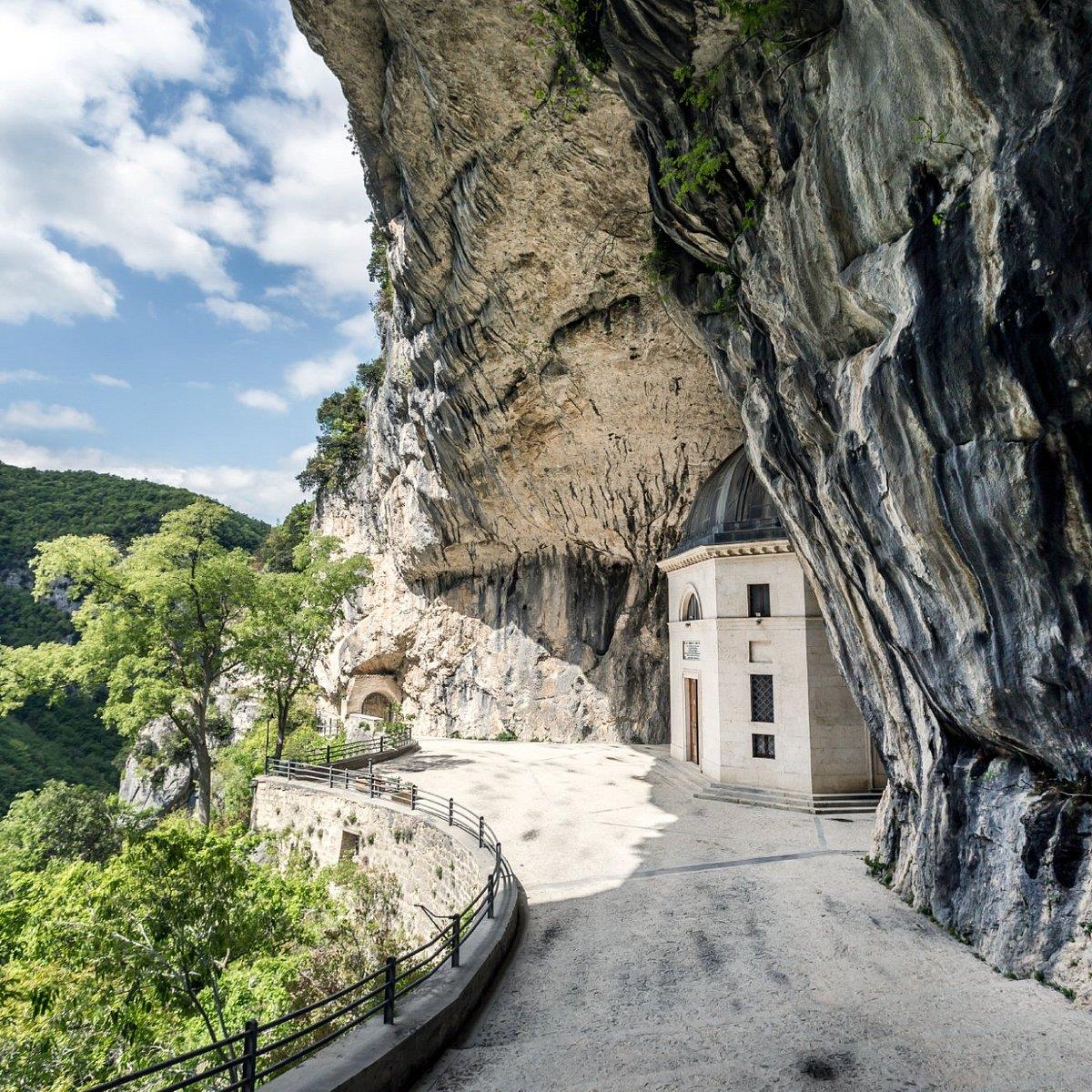
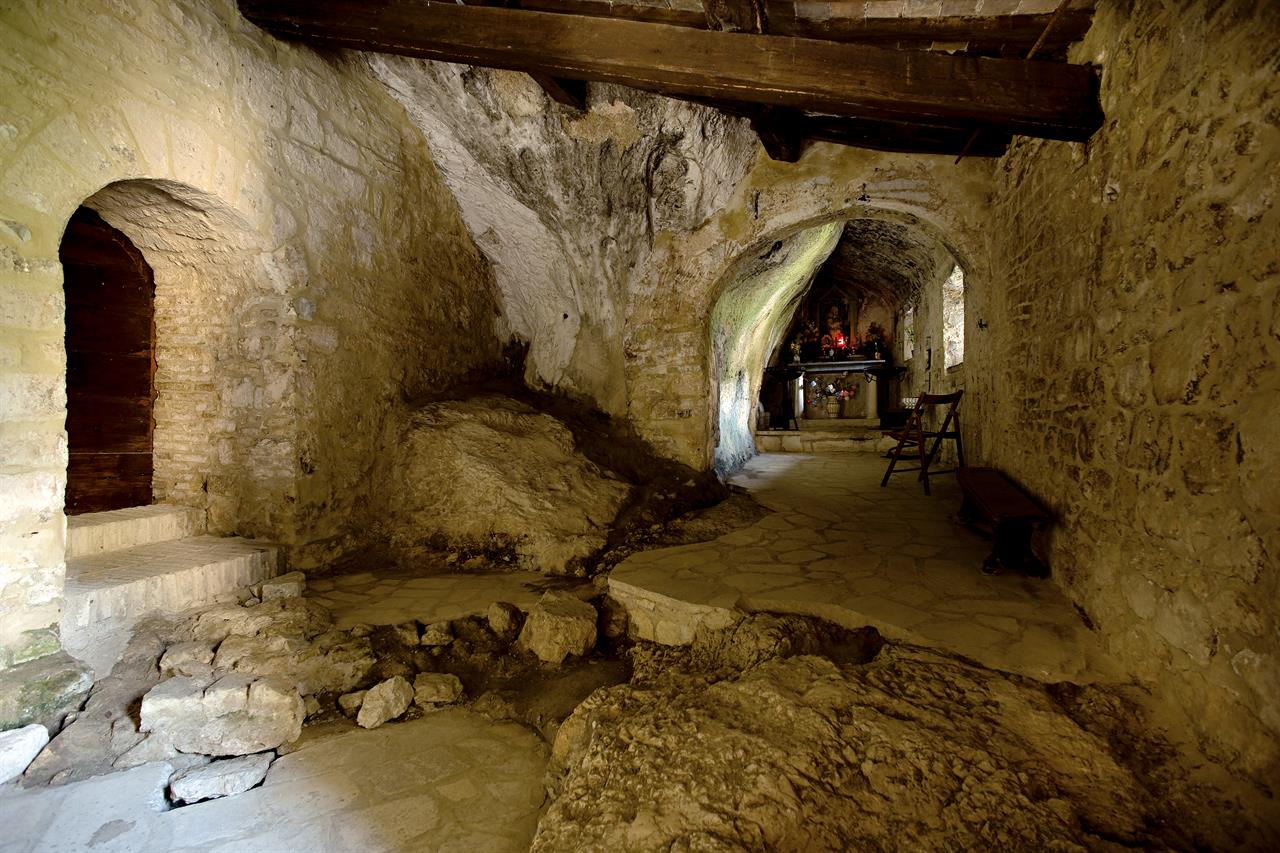
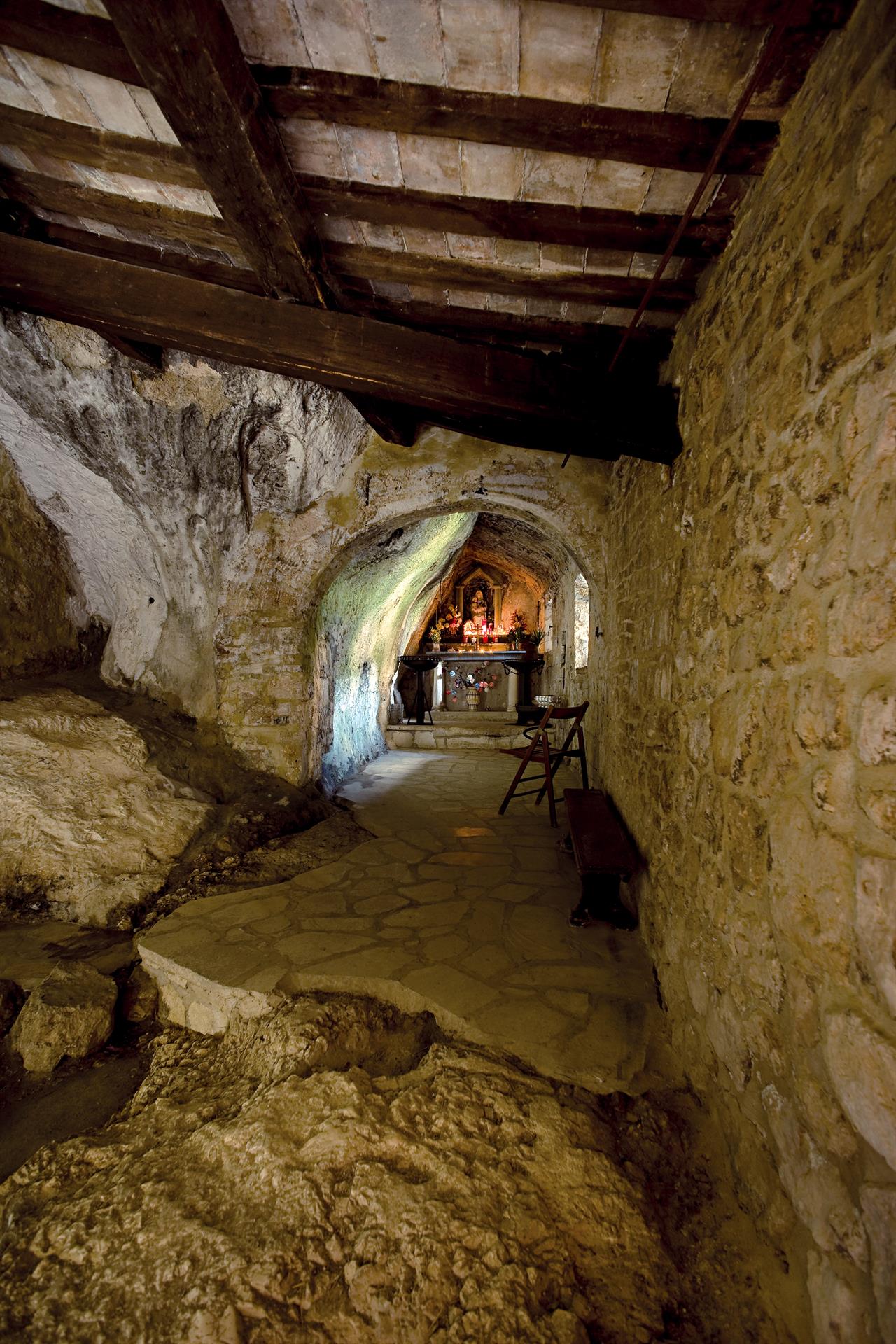
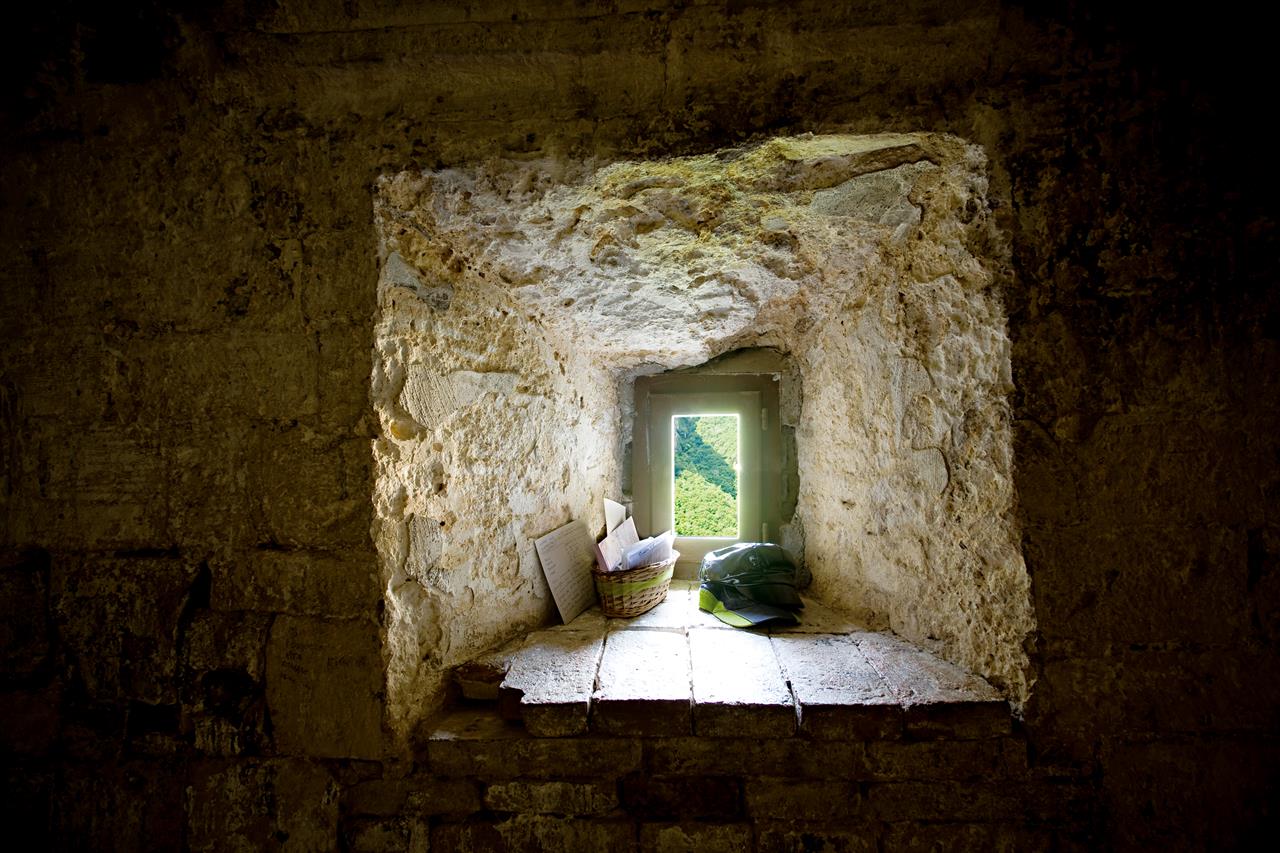
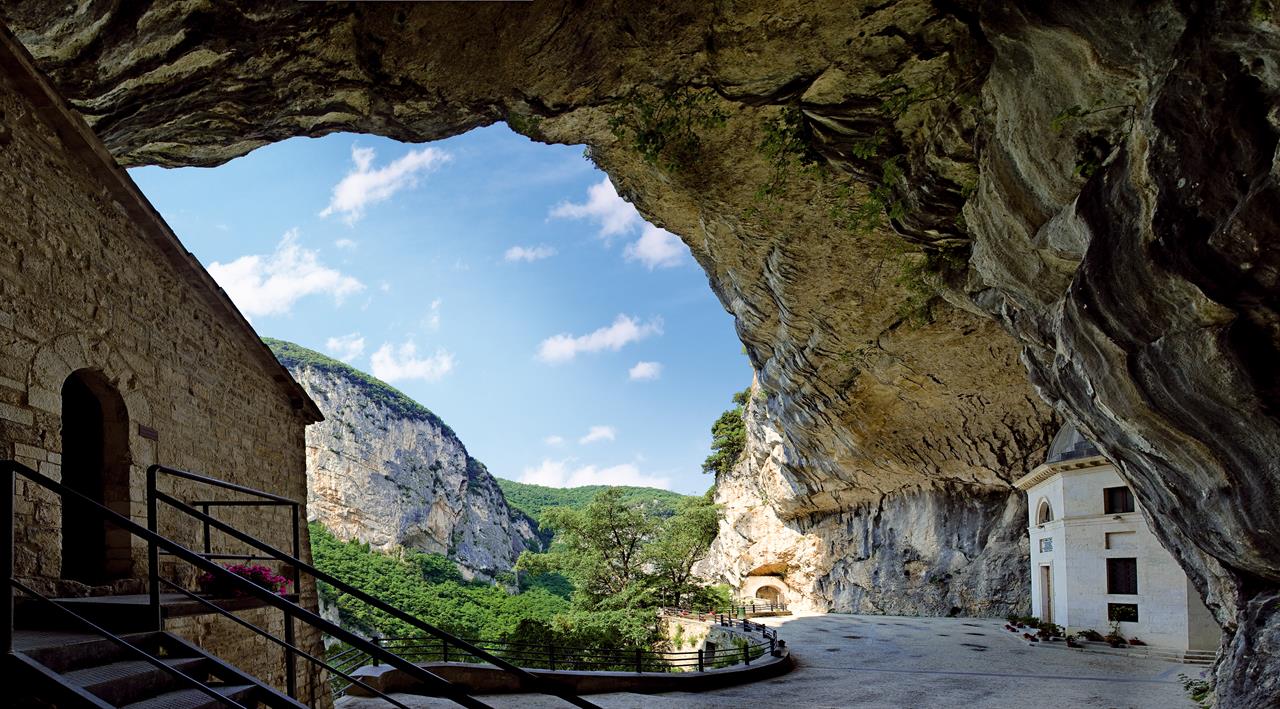
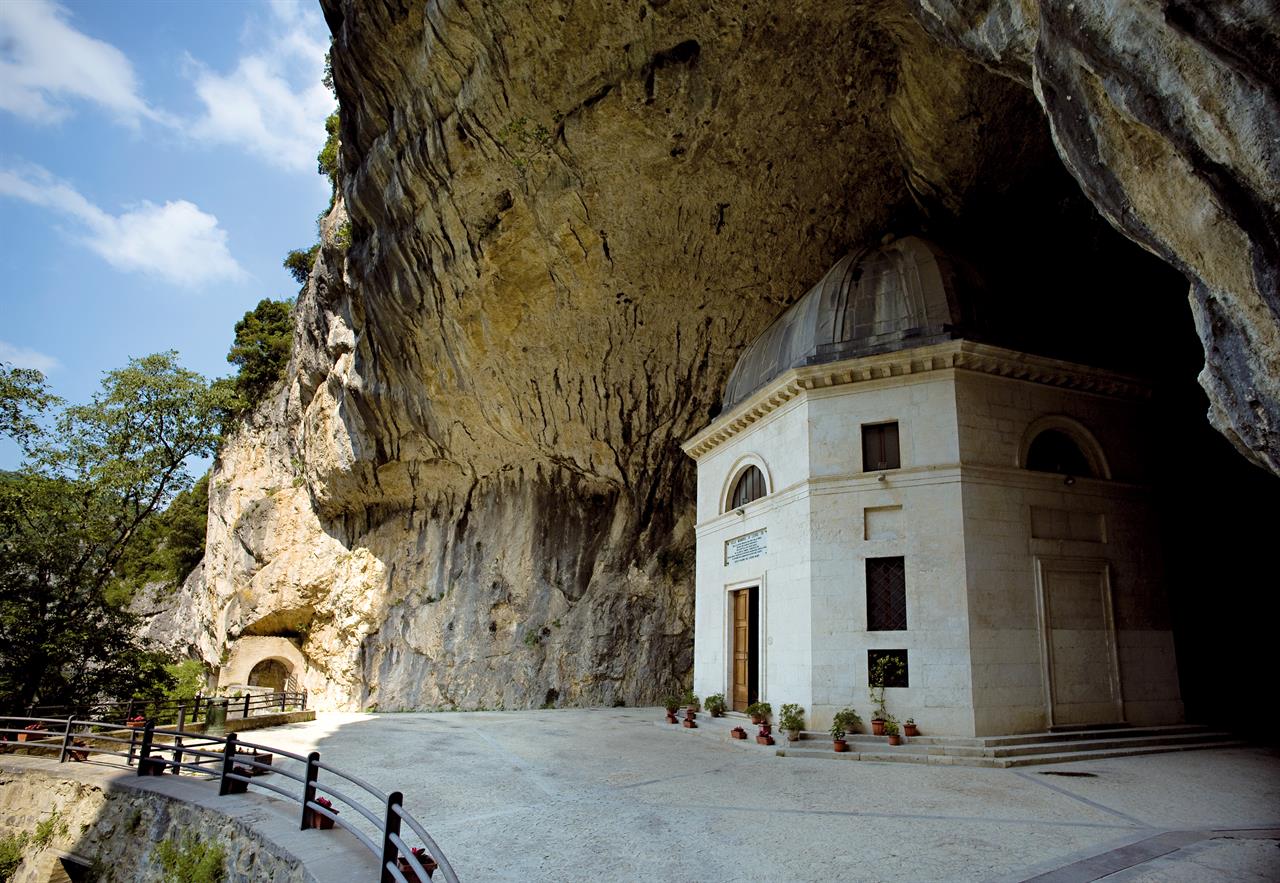

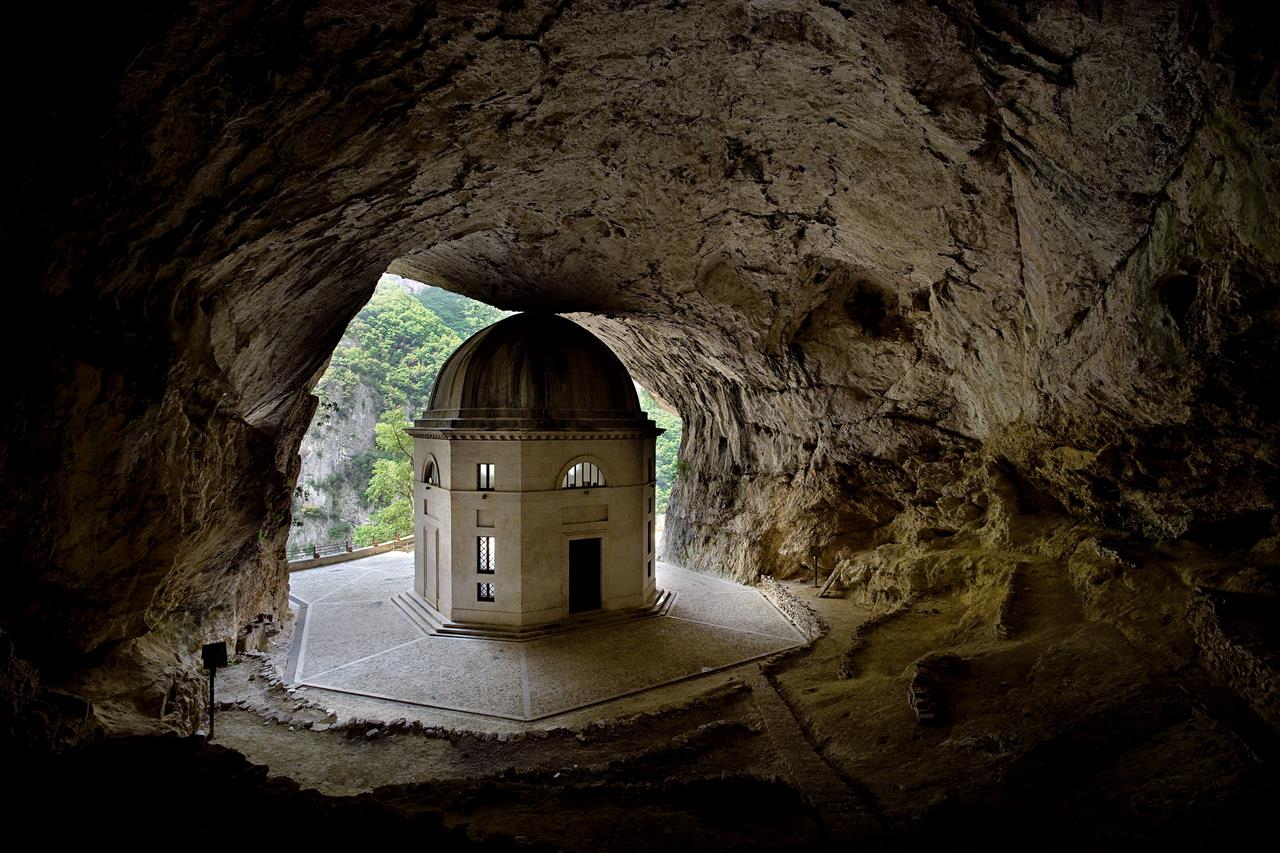
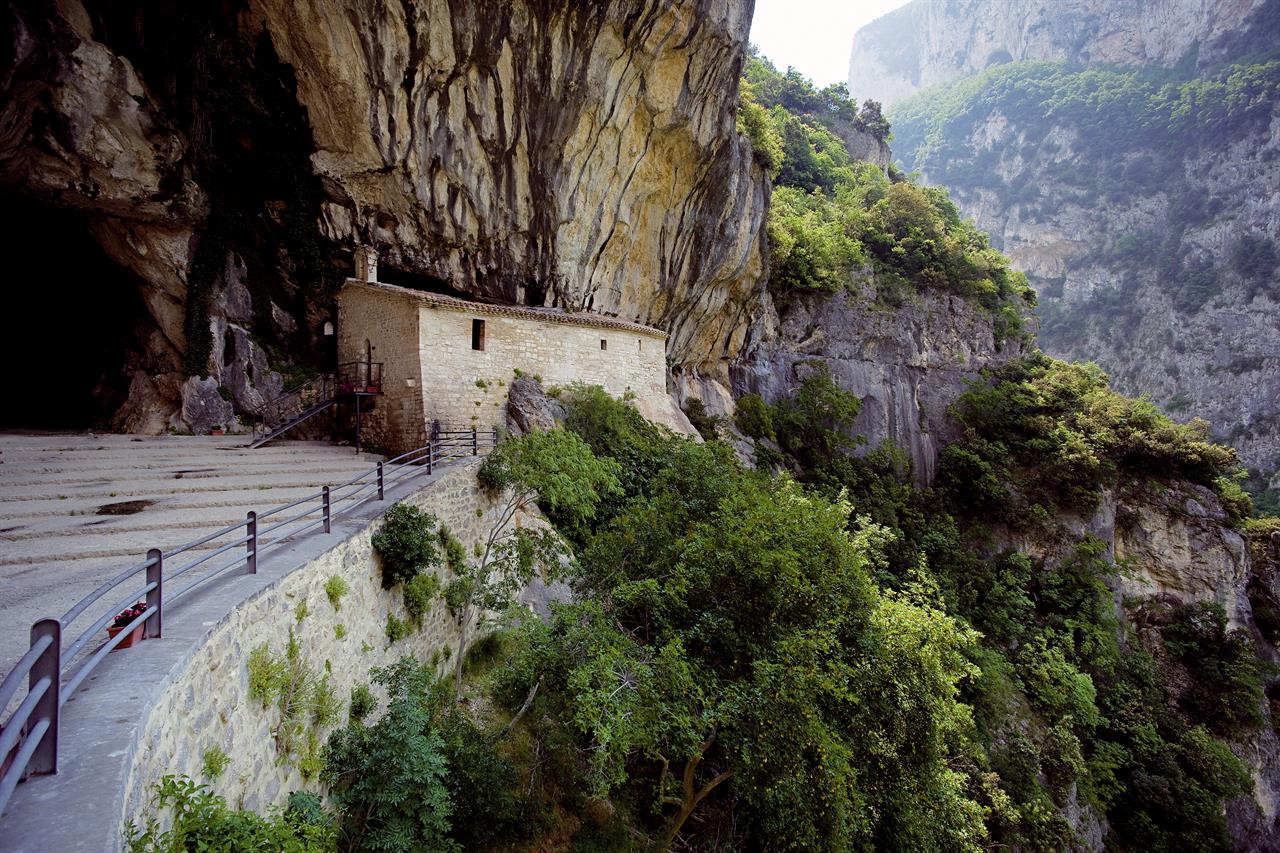
Valadier Temple
Next
to Santa Maria infra Saxa, right at the centre of the cave, stands the Madonna
of Frasassi shrine, also known as the Valadier Temple, because it is generally
attributed to the style of architect Giuseppe Valadier. Built in the
neoclassical style, the shrine was commissioned in 1819 by Cardinal Annibale
della Genga, who would later become Pope Leo XII, and was inaugurated in 1828.
A lead-covered dome sits atop the octagonal plan temple, whose main structure
is built from local limestone quarried near the cave.
A
white Carrara marble statue of the Virgin with Child, attributed to the school
of Antonio Canova, once stood on the altar built from local alabaster and is
now kept at the Museum of Genga “Art, History, Territory”.
INTERESTING FACTS:
- The
Venus of Frasassi was discovered in the cave in 2008. This small sculpture
belongs to the stylistic tradition of the Venus figurines of Gravettian
culture, dating to the Upper Palaeolithic phase between 28,000 and 20,000 years
ago. The Frasassi Venus weighs just over 60 grams and is 8.7 centimetres in
length.
- A
wooden image of the Madonna used to be worshipped at Santa Maria Infra Saxa
until it was accidentally burned in the first half of the 20th century and
replaced with the present stone statue.
- Bread
ovens, coins and human bones all came to light during construction work on the
Valadier Temple. This demonstrates that the caves of the Gola di Frasassi gorge
have been used and frequented by humans since prehistoric times, not only for
shelter or as dwelling places, but mainly as places of worship and for funerary
purposes.
- During
the festive season, this part of the landscape serves as a natural backdrop to
one of the most important and evocative live nativity scenes in Italy, with
around 300 people taking part.
Services
 Parking outside
Parking outside Pets Allowed
Pets Allowed